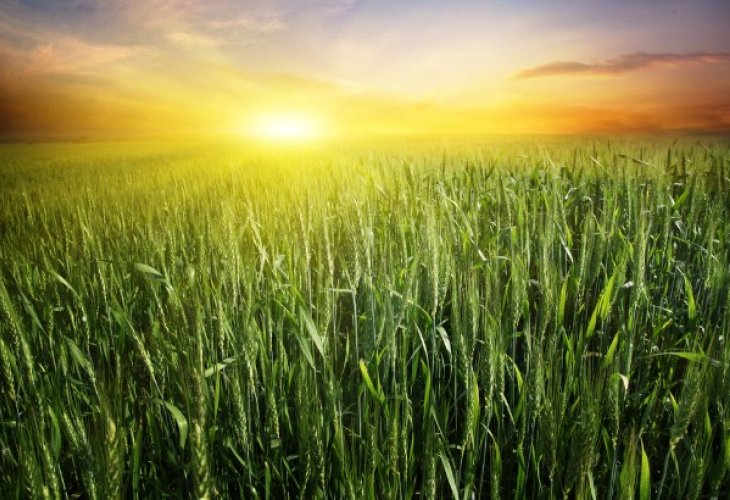For I Own the Whole Earth: The Sabbatical Year - The Halachic Guide
What is the special virtue of the Shemitah commandment? When can flowers be planted? And what about pruning, fertilizing the soil, and hoeing with a hoe?
 (Photo: shutterstock)
(Photo: shutterstock)A brief introduction to the Shemitah year
It is appropriate for every person to study the laws of Shemitah, as through this one will be inspired to fulfill all the laws of Shemitah properly, and through this merit we will deserve the coming of the righteous Messiah. Rabbi Ben Zion Abba Shaul, in the introduction to his book "Or L'Tzion Shevi'it," wrote that the virtue of Torah study and fulfillment of commandments in the seventh year is greater than in other years.
The Kli Yakar writes in Parshat Behar, regarding the reason and foundation for the Shemitah commandment that this mitzvah aims to instill in Israel the traits of faith and trust, as Hashem was concerned that when they would enter the land, they might engage in working the land according to natural customs. And when they become successful, they might forget Hashem and remove their trust in Him, thinking that their own strength and might had brought them this wealth and that the world follows its natural course. They might think the land is theirs and they are the owners with no one else. Therefore, Hashem took them completely out of the natural custom. For in six years, the way of nations is to sow for two years and leave the land fallow for one year so as not to deplete its strength. But Hashem said, "six years you shall sow your field" year after year, and I promise to increase its strength so it won't be depleted.
And there's another miracle within a miracle, that after sowing for six years, if in the sixth year the land's strength isn't depleted, at the very least it shouldn't gain strength. Yet Hashem said, on the contrary, in the sixth year He will add so much strength that it says, "I will command My blessing in the sixth year, and it will produce enough for three years." "And through all these wonders which I have put in your hand, you will know 'that all the earth is Mine.'" And through this, your eyes will be lifted to Hashem, as we found with the daily manna, so that their eyes would be lifted to Hashem always and they would trust in Him continually.
Below, with Hashem's help, is detailed guidance regarding planting fruit trees, non-fruit trees, saplings, and the like:
1. It is forbidden to plant fruit trees after the 15th of Av of the sixth year (this date has already occurred last Monday), and the reason is because of appearances. If one plants fruit trees after this date, the seventh year will be considered the first year in counting the years of Orlah, and people might suspect that one planted during the Shemitah. If one transgressed and planted, they should uproot it. If they did not uproot it and the Orlah years have passed, the fruits are permitted for consumption as explained in the Rambam (Chapter 3 of Shemitah, Law 11).
2. The above prohibition on planting fruit trees applies even through a non-Jew, so if a non-Jew transgressed and planted the tree, one must uproot it to avoid suspicion.
3. One who wishes to plant non-fruit trees should ideally plant them by the 14th of Elul of the year before Shemitah, so that the absorption into the soil, which takes fourteen days, will occur before the Shemitah year.
4. Ornamental seeds and flowers should be sown up to three days before Rosh Hashanah so that their absorption into the soil will be before Rosh Hashanah. However, when necessary, one may be lenient and plant them up until Rosh Hashanah. And one who buys flowers from nurseries in a small pot with a clump of soil may plant them with their soil clump until the eve of Rosh Hashanah.
5. One should advance before the Shemitah year all work that can be done in the sixth year, so that one will not need to do them during Shemitah, or to minimize the number of labors performed during the Shemitah year. Similarly, one should postpone at the end of the Shemitah year all work that can be delayed until the eighth year, as explained in Chazon Ish (Shevi'it Chapter 21, end of note 17).
6. One should ensure the fertilization of the soil in the sixth year, and there is a possibility to use combined fertilization called "slow release" that dissolves slowly in the soil, thereby fertilizing the soil in a slow and controlled manner throughout the Shemitah year (Book of Kedushat Ha'aretz Shevi'it, p. 126).
7. During Shemitah, it is forbidden to prune trees and bushes, both fruit trees and non-fruit trees, therefore one should ensure maximum pruning of trees and bushes before the Shemitah year so that pruning will not be necessary during Shemitah itself.
8. It is forbidden to support trees during the Shemitah year. Therefore, one should prepare supports before the Shemitah year, and the same applies to whitewashing trunks and preparing irrigation dishes.
9. The book 'Mishpetei Eretz' quotes the Chazon Ish – plowing between grapevines should be done before the Shemitah, and during Shemitah itself, it is only permitted to hoe with a hoe when necessary to prevent the tree from dying.
Rabbi Shai Amar is a rabbi in the Halachic department of Hidabroot
Questions for the rabbi 054-8448909

